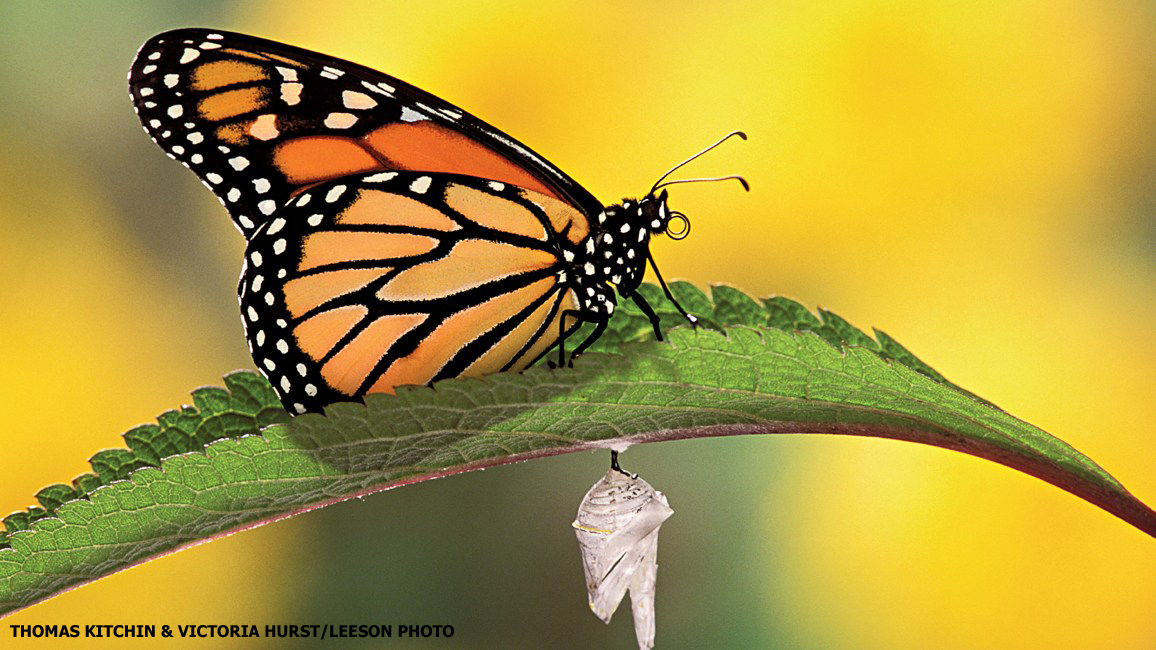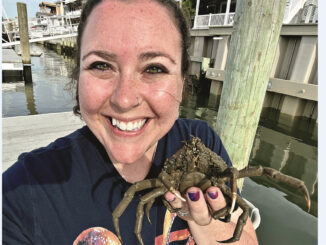
Monarchs Rule!
By Gerry BishopOf all the different butterflies flitting through the skies of North America, no kind is as famous as the monarch.

But WHY? In most ways, monarchs are just like other butterflies. Their wings are covered with tiny scales that give them their beautiful colors. They smell with their antennas and taste with their feet. And to drink sweet nectar from flowers, they each uncoil a long proboscis (pro-BAH-sis) and use it as a straw.
Monarchs even grow up in the usual butterfly way. A caterpillar hatches from an egg and feeds on plants. It then turns into a chrysalis (KRISS-uh-liss). Inside the chrysalis, it changes into an adult.
So, what is it that makes monarch butterflies reign supreme? It’s their amazing, one-of-a-kind, long-distance migration.

MONARCHS ON THE MOVE
1: Take to the Skies!
Each fall, millions of monarchs head for their wintering grounds. Those in the West head for the coast of California. Those in the East and Midwest fly to a cool, damp forest in the mountains of Mexico. Some travel as far as 3,000 miles!
2: Stop for Lunch
Migrating monarchs stop often to feed on the nectar of fall-blooming flowers. And waiting nearby may be people with nets. They capture some of the monarchs and stick little tags to their wings.
Later, some of the tagged butterflies may be caught again farther south. Scientists will use the information on the tags to learn where the tagged butterflies came from, how far they traveled, and how long it took them. Scientists hope to use what they discover to help monarchs survive.
After about two months of travel, the monarchs reach their destinations. They gather by the millions in a few small patches of forest. And there they stay, hanging from tree trunks and branches.
3: Bask in the Sun
When the sun is shining, the monarchs bask in the warmth. At night and whenever the air is cool, they huddle together to keep warm. Many of the monarchs may die from cold night temperatures, but many others survive until the weather turns warm again. In spring, the survivors will begin the trip back north.
4: Head on Back
On the way back, the monarchs stop to mate, lay eggs on milkweed plants, and then die. The eggs hatch into caterpillars, which feed on milkweed and eventually turn into adults. Then those adults fly another part of the long journey north. They, too, will stop to mate and reproduce. By mid-summer, the grandchildren of the monarchs that left Mexico reach the northern states and Canada!
YOU Can Help Monarchs
The amazing monarch migration has gone on for about 20,000 years. But now it may be in danger. Some of the trees where the butterflies spend the winter are being cut down for lumber. And, in North America, the milkweed plants that monarch caterpillars need to feed on are being wiped out by chemicals used in farming.
The good news is that some people are working to solve these problems. You can help, too. Here’s how:
- Welcome monarchs to your backyard or schoolyard by planting a garden with milkweed and nectar plants. Go to monarchwatch.org for more information.
- Never spray chemicals that could harm monarchs or the plants they need to survive.
- Spread the word about monarchs!

















